What are the Flags, Symbols & Currency of the United States
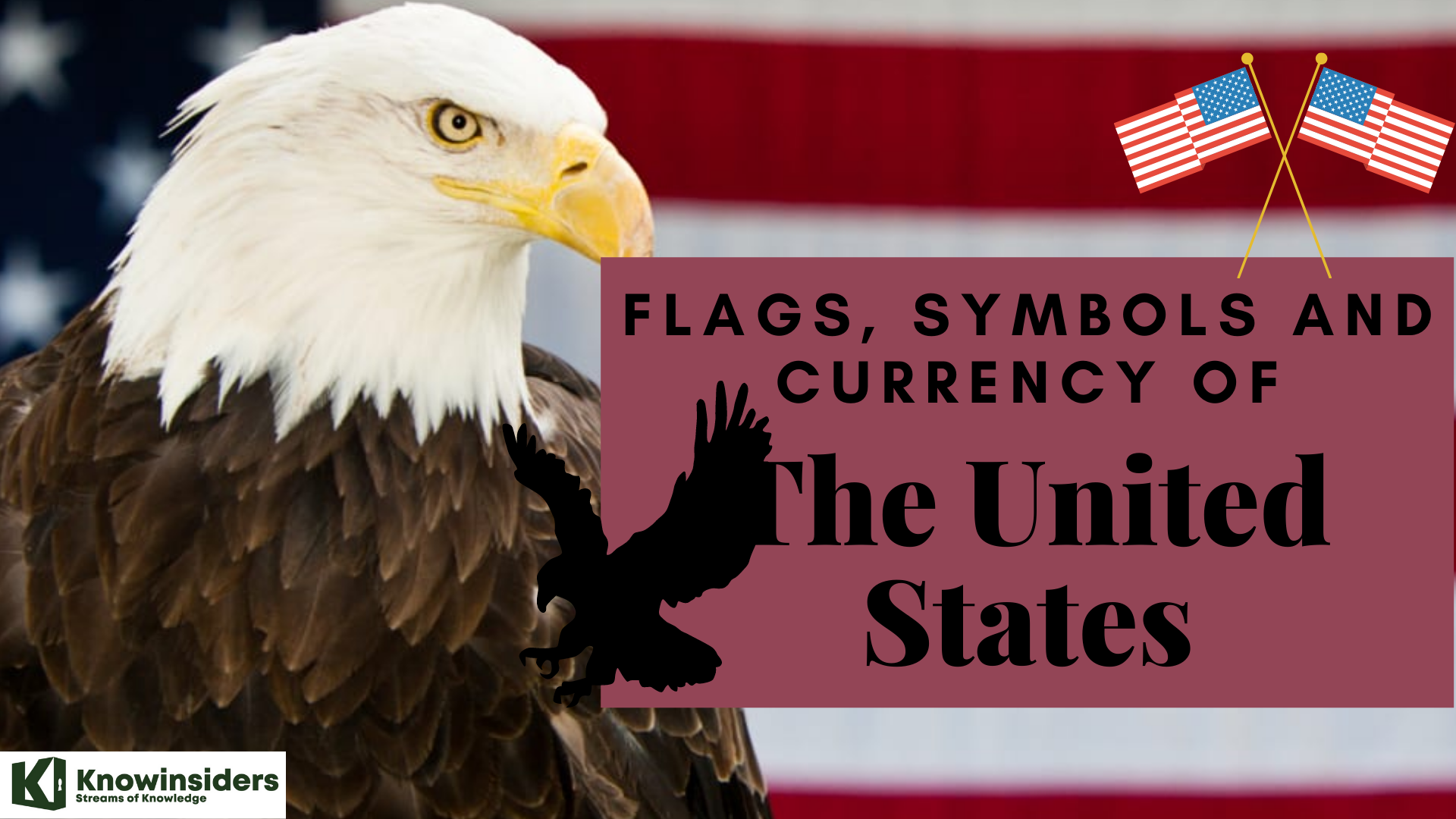 |
| Flags, Symbols and Currency of the United States. Image: KnowInsiders.com |
North America is home to the United States of America (U.S.A), also referred to as the United States (U.S. or US) or America.
It is made up of 326 Indian reservations, five large unincorporated territories, a federal district, fifty states, and a few smaller possessions. With a total area of 3.8 million square miles (9.8 million square kilometers), it ranks third or fourth in the world.
Along with limited maritime borders with the Bahamas, Cuba, and Russia, the United States shares significant land borders with Canada to the north and Mexico to the south. It is the third most populous country in the world, home to over 331 million people. New York City is the most populated city, and Washington, D.C. is the capital of the country.
The three distinct branches of government in the United States—a federal republic and a representative democracy—include a bicameral legislature. It was one of the founding members of NATO, the Organization of American States, the World Bank, the International Monetary Fund, and the United Nations. It is a long-term participant in the UN Security Council. Its population, which is regarded as a melting pot of cultures and ethnicities, has been significantly influenced by immigration for centuries. The nation has low levels of perceived corruption and ranks highly in international assessments of economic freedom, quality of life, education, and human rights. Nonetheless, the nation has come under fire from both domestic and foreign critics for racial, economic, and wealth disparities, the death penalty, high incarceration rates, and the absence of universal health care.
Let's examine the background of the American flag, its symbols, and its money.
 Why are Americans Crazy and Obsessed with the American Flag? Why are Americans Crazy and Obsessed with the American Flag? |
Flag of the United States of America
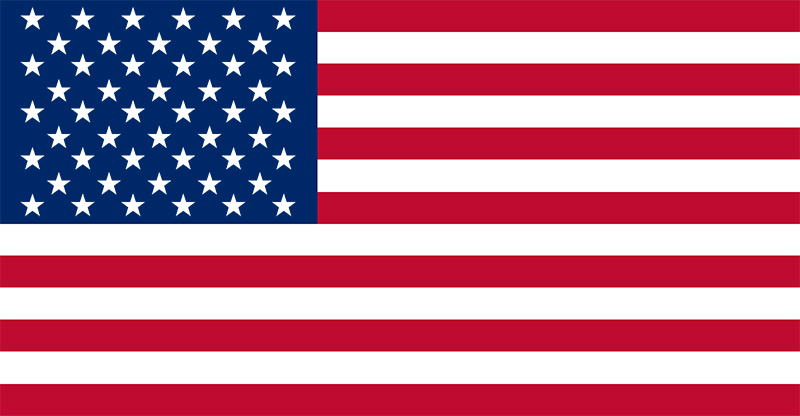 |
| national flag consisting of white stars (50 since July 4, 1960) on a blue canton with a field of 13 alternating stripes, 7 red and 6 white. The 50 stars stand for the 50 states of the union, and the 13 stripes stand for the original 13 states. The flag’s width-to-length ratio is 10 to 19. Photo: Britannica |
The Continental Colours (or, at times, the Grand Union Flag, the Cambridge Flag, the Somerville Flag, or the Union Flag) was hoisted on a towering 76-foot (23-metre) liberty pole at Prospect Hill in Charlestown (now in Somerville), Massachusetts, on January 1, 1776; it was raised at the behest of Gen. George Washington, whose headquarters were nearby.
The flag had 13 horizontal stripes (probably red and white or red, white, and blue) and the first version of the British Union Flag (Union Jack) in the canton. It was flown at forts and on naval vessels as the flag of the Continental Army. Another popular early flag, the Sons of Liberty flag of 1765, had only nine red and white stripes. Many 18th-century American colonial banners featured various versions of "Don't Tread on Me" coiled-rattlesnake flags, including several flown by military units during the Revolutionary War. The Minutemen of Culpeper County, Virginia, for example, included not only the rattlesnake and the "Don't Tread on Me" motto, but also the famous words of Virginia patriot Patrick Henry, "Liberty or Death."
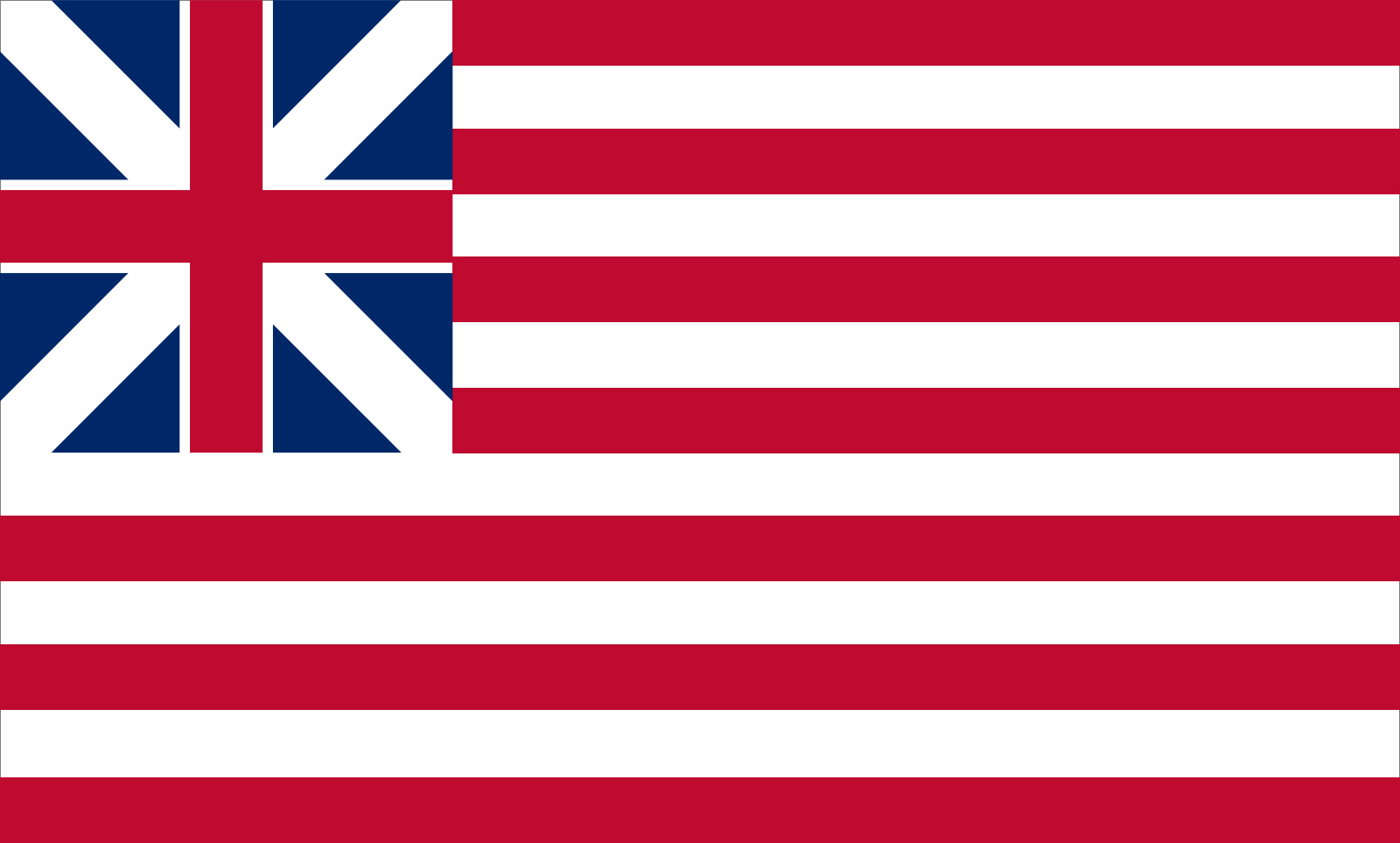 |
| Photo: Britannica |
The Stars and Stripes was the first official national flag, formally approved by the Continental Congress on June 14, 1777. The first Flag Resolution was as follows: "Resolved, that the flag of the United States be thirteen stripes, alternate red and white; that the union be thirteen stars, white in a blue field representing a new constellation."
The layout of the stars was left undefined, and flag makers used a variety of patterns. The designer of the flag, most likely Congressman Francis Hopkinson of Philadelphia, a signer of the Declaration of Independence, may have had a ring of stars in mind to represent the new constellation.
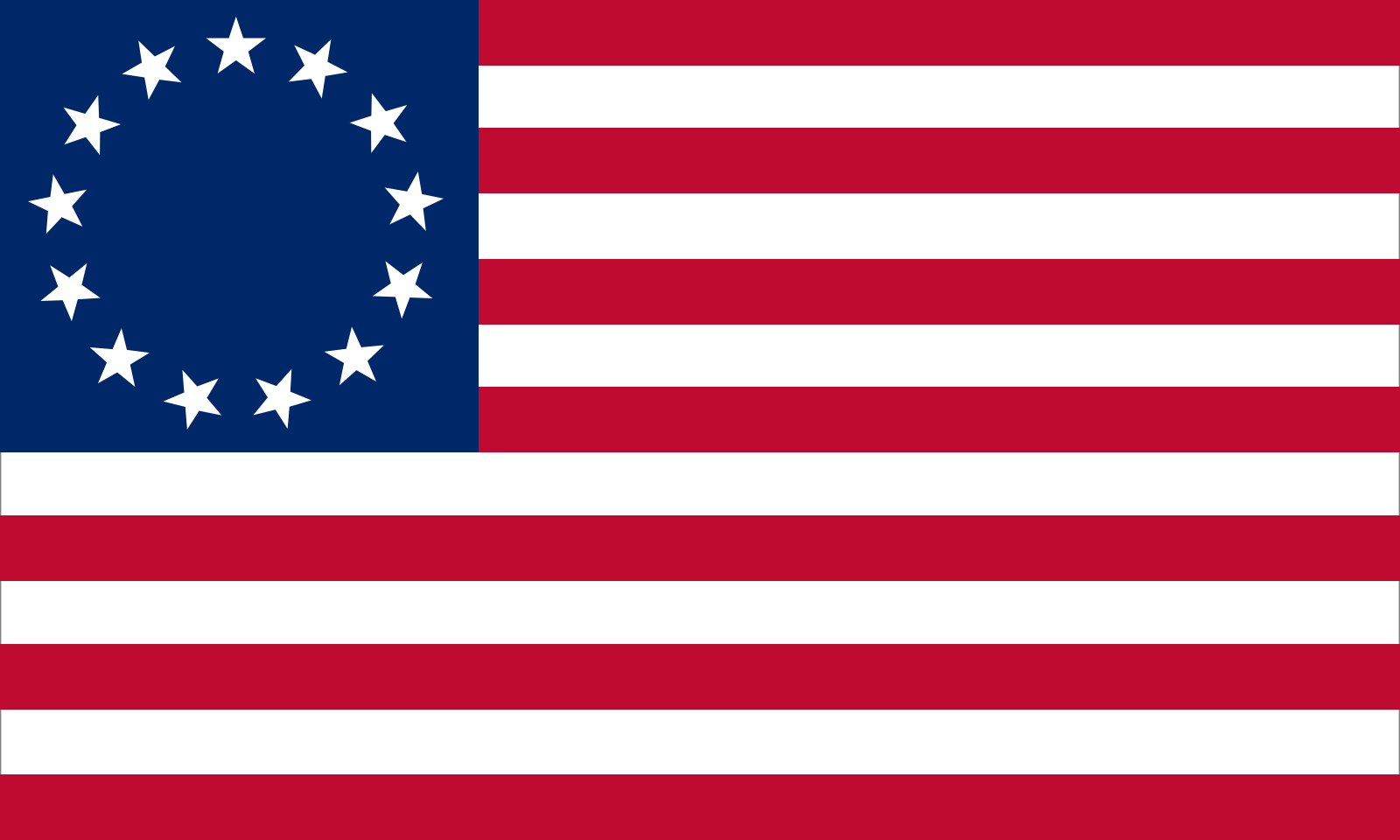 |
| U.S. flag commonly attributed to Betsy Ross. Photo: Britannica |
On May 1, 1795, Congress passed the second Flag Resolution, which required that new stars and stripes be added to the flag whenever new states were admitted to the Union. Vermont (1791) and Kentucky (1792) were the first two new states to be formed. (One such flag was Mary Pickersgill's 1,260-square-foot [117-square-metre] "Star-Spangled Banner," which Francis Scott Key saw at Fort McHenry in September 1814 and inspired him to write the patriotic poem that became the lyrics of the national anthem.) After five more states were admitted, Congress passed the third and final Flag Resolution, requiring that the number of stripes remain at 13, the number of stars always match the number of states, and any new star be added on July 4 following a state's admission.
On March 5, 1861, the Confederate States of America adopted its first flag, the Stars and Bars, during the American Civil War. The first Confederate Battle Flag was flown soon after. Over the next two years, the design of the Stars and Bars changed. The Confederacy adopted its first official national flag, known as the Stainless Banner, on May 1, 1863. On March 4, 1865, about a month before the war's end, a modification of that design was adopted.
NUMBER OF STARS IN THE U.S. FLAG, AND ADDITIONAL STATES REPRESENTED 1777 TO PRESENT
| Date of Flag | Additional states with date of entry into Union |
| 13 stars - 1777 to 1795 | Delaware (December 7, 1787) Pennsylvania (December 12, 1787) New Jersey (December 18, 1787) Georgia (January 2, 1788) Connecticut (January 9, 1788) Massachusetts (February 6, 1788) Maryland (April 28, 1788) South Carolina (May 23, 1788) New Hampshire (June 21, 1788) Virginia (June 25, 1788) New York (July 26, 1788) North Carolina (November 21, 1789) Rhode Island (May 29, 1790) |
| 15 stars - 1795 to 1818 | Vermont (March 4, 1791) Kentucky (June 1, 1792) |
| 20 stars - 1818 to July 3, 1819 | Tennessee (June 1, 1796) Ohio (March 1, 1803) Louisiana (April 30, 1812) Indiana (December 11, 1816) Mississippi (December 10, 1817) |
| 21 stars - July 4, 1819 to July 3, 1820 | Illinois (December 3, 1818) |
| 23 stars - July 4, 1820 to July 3, 1822 | Alabama (December 14, 1819) Maine (March 15, 1820) |
| 24 stars - July 4, 1822 to July 3, 1836 | Missouri (August 10, 1821) |
| 25 stars - July 4, 1836 to July 3, 1837 | Arkansas (June 15, 1836) |
| 26 stars - July 4, 1837 to July 3, 1845 | Michigan (Jan 26, 1837) |
| 27 stars - July 4, 1845 to July 3, 1846 | Florida (March 3, 1845) |
| 28 stars - July 4, 1846 to July 3, 1847 | Texas (December 29, 1845) |
| 29 stars - July 4, 1847 to July 3, 1848 | Iowa (December 28, 1846) |
| 30 stars - July 4, 1848 to July 3, 1851 | Wisconsin (May 29, 1848) |
| 31 stars - July 4, 1851 to July 3, 1858 | California (September 9, 1850) |
| 32 stars - July 4, 1858 to July 3, 1859 | Minnesota (May 11, 1858) |
| 33 stars - July 4, 1859 to July 3, 1861 | Oregon (February 14, 1859) |
| 34 stars - July 4, 1861 to July 3, 1863 | Kansas (January 29, 1861) |
| 35 stars - July 4, 1863 to July 3, 1865 | West Virginia (June 20, 1863) |
| 36 stars - July 4, 1865 to July 3, 1867 | Nevada (October 31, 1864) |
| 37 stars - July 4, 1867 to July 3, 1877 | Nebraska (March 1, 1867) |
| 38 stars - July 4, 1877 to July 3, 1890 | Colorado (August 1, 1876) |
| 43 stars - July 4, 1890 to July 3, 1891 | North Dakota (November 2, 1889) South Dakota (November 2, 1889) Montana (November 8, 1889) Washington (November 11, 1889) Idaho (July 3, 1890) |
| 44 stars - July 4, 1891 to July 3, 1896 | Wyoming (July 10, 1890) |
| 45 stars - July 4, 1896 to July 3, 1908 | Utah (January 4, 1896) |
| 46 stars - July 4, 1908 to July 3, 1912 | Oklahoma (November 16, 1907) |
| 48 stars - July 4, 1912 to July 3, 1959 | New Mexico (January 6, 1912) Arizona (February 14, 1912) |
| 49 stars - July 4, 1959 to July 3, 1960 | Alaska (January 3, 1959) |
| 50 stars - July 4, 1960 to present | Hawaii (August 21, 1959) |
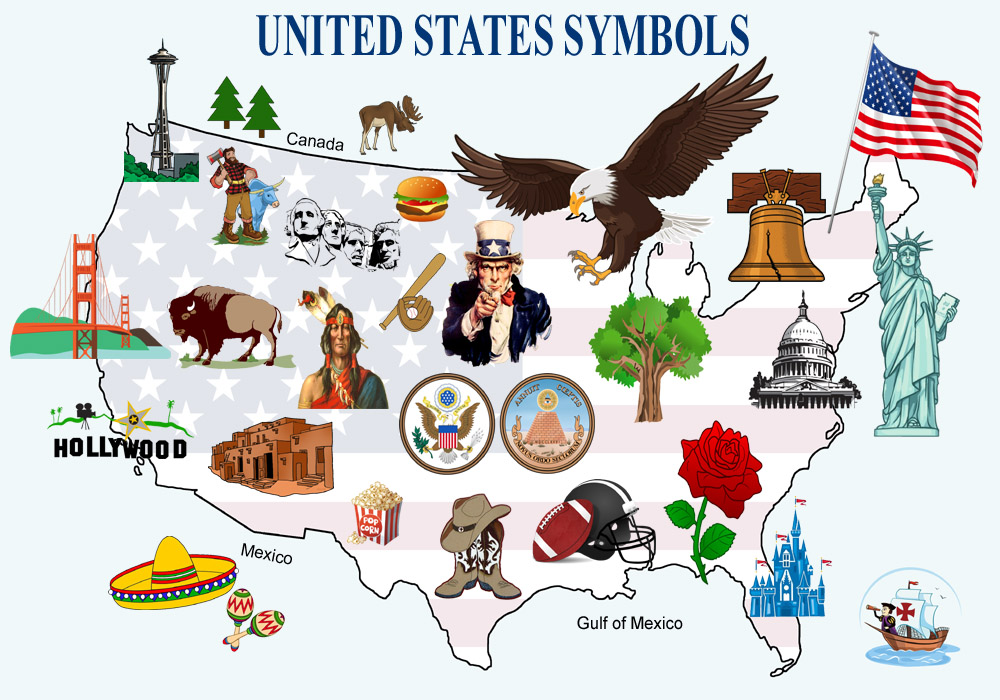 |
| Photo: Legendsofamerica |
United States Symbols
The United States, like any other country, has its symbols — specific objects that represent beliefs, values, traditions, or other intangible ideas that distinguish it. These symbols can help to unite a nation by reminding its citizens of its history and most important principles.
These principles are represented by several symbols in the United States.
United States Flag – The United States flag is also known as the "Stars and Stripes" or "Old Glory." The Continental Congress passed a resolution on June 14, 1777, which stated, "Resolved, That the flag of the United States be thirteen stripes, alternate red and white; that the union be thirteen stars, white in a blue field, representing a new Constellation." Many historians believe Betsy Ross did not sew the first flag created under this resolution. The current 50-star flag is the 27th edition of the flag, and it has been in use since 1960. In 1818, Congress passed legislation requiring a new star for each new state, while the 13 stripes remained constant to represent the 13 colonies.
National Bird – Bald Eagle – The bald eagle has long been the United States' national bird. The Great Seal of the United States was adopted by the Continental Congress in 1782, depicting a bald eagle holding 13 olive branches in one talon and 13 arrows in the other. The olive branch represents the ability to make peace, while the arrows represent the ability to make war. The bald eagle was chosen for its long life, great strength, and majestic appearance, as well as the fact that it was thought to exist only on this continent at the time.
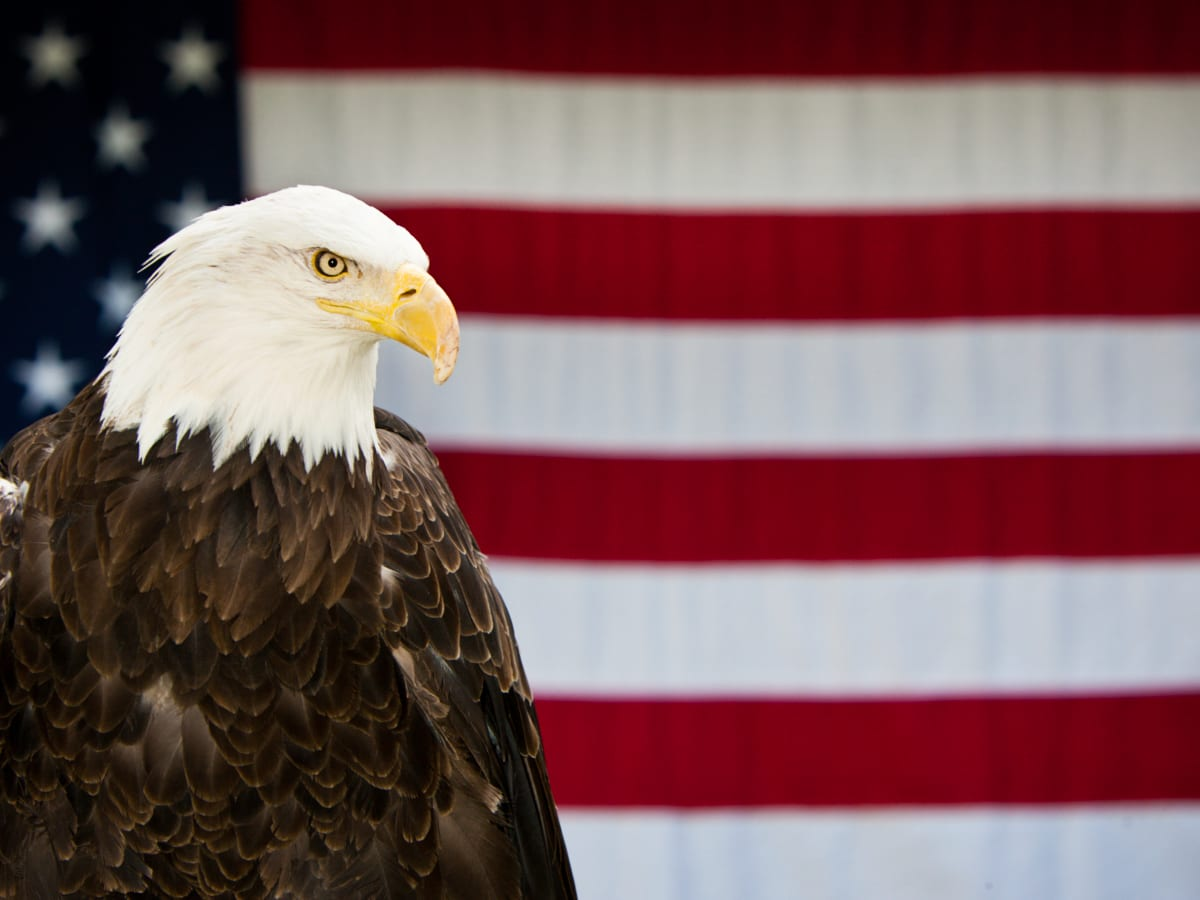 |
| Photo: iStock |
National Mammal – North American Bison – The bison, like the bald eagle, has long been a symbol of America for its strength, endurance, and dignity, reflecting our country's pioneer spirit. The bison was designated as the National Mammal in May 2016 during a ceremony at Wind Cave National Park in South Dakota. Tens of millions of bison, also known as buffalo, once roamed a swath from central Canada to the Great Plains and northern Mexico. After a century of slaughter caused by commercial hunting for buffalo pelts, the population had been reduced to a thousand or fewer by the late 1800s. However, approximately 30,000 wild bison now roam the country, with Yellowstone National Park having the largest population. They can also be found on public, tribal, and private lands in the United States and Canada.
The Liberty Bell – The Liberty Bell was commissioned in 1752 by the Pennsylvania colony's leaders, who wanted a bell for its state house (now known as Independence Hall) that could be heard throughout the city. The bell has a biblical quote on one side: "Proclaim LIBERTY throughout all the land unto all the inhabitants thereof." The bell's most notable feature, however, is a crack in the metal that runs up from the bell's lip. Although there is no proof, many people believe that the Liberty Bell was rung on July 8, 1776, to commemorate the reading of the Declaration of Independence. In the 1830s, abolitionists adopted the bell as a symbol of their fight to end slavery, coining the term "Liberty Bell." The bell traveled around the country for exhibitions and patriotic events between 1885 and 1915. The Liberty Bell Center on Philadelphia's Independence Mall currently houses the bell. The crack in the bell is the source of many stories that have nearly mythic proportions; the appearance of the crack may have added to the bell's symbolic power.
The National Anthem – “The Star-Spangled Banner,” has a colorful history. After witnessing the British Navy bombarding ships during the Battle of Fort McHenry in Baltimore, Maryland during the War of 1812, Francis Scott Key wrote the lyrics to the anthem as a poem in 1814. The melody was "borrowed" from a popular British song's tune. In 1931, the song was designated as the official national anthem, replacing several other songs commonly heard at public events. The anthem is somewhat contentious due to its war-related imagery and the difficulty that the music presents to singers.
National Motto – In God We Trust – President Dwight Eisenhower signed a Joint Resolution of the 84th Congress declaring "In God We Trust" to be the official national motto of the United States of America in 1956. This motto replaced "E Pluribus Unum," which had been used since the Great Seal of the United States was first designed in 1776. The motto first appeared on a two-cent coin in 1864.
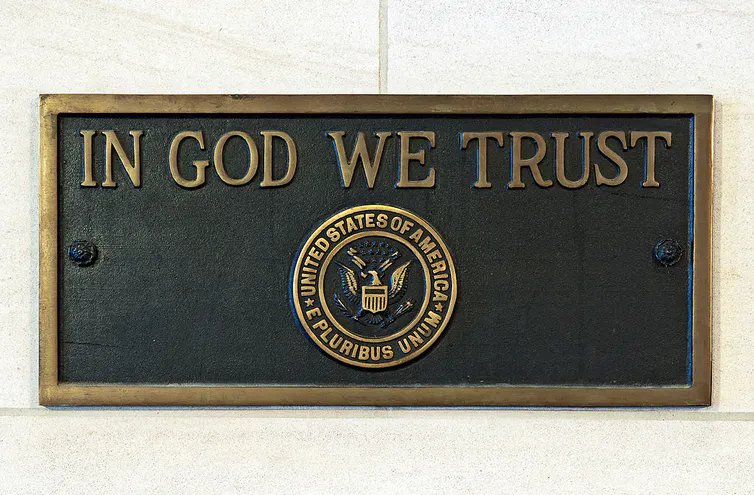 |
| Photo: The conversation |
Great Seal of the United States – This 1782 seal is used to authenticate documents such as foreign treaties and presidential proclamations. The symbols on the seal represent the beliefs and values that the Founding Fathers wished to pass down to future generations. The seal features our national bird, the bald eagle, holding a scroll in its beak inscribed with our original national motto, "E Pluribus Unum," which is Latin for "one from many" and represents a nation formed from 13 colonies. In its right talon, the eagle holds an olive branch, and in its left, a bundle of thirteen arrows, representing the power of peace and war. The reverse side of the Great Seal depicts the national coat of arms, which is used on a variety of documents such as US passports, military insignia, embassy placards, and various flags. The coat of arms features a 13-step pyramid with the year 1776 in Roman numerals, an eye at the top of a pyramid, and the Latin motto "Annuit Coeptis," which translates to "He favors our endeavors." A scroll beneath the pyramid reads "Novus Ordo Seclorum," which is Latin for "New Order of the Ages," referring to 1776 as the start of the American new era.
Uncle Sam – Uncle Sam is a common national personification of the United States federal government or the country in general that, according to legend, first appeared during the War of 1812. The name is derived from Samuel Wilson, a meat packer from Troy, New York, who supplied the United States Army with barrels of beef during the War of 1812. He is portrayed as an older, bearded man dressed in attire reminiscent of the American flag. While Uncle Sam represents the government specifically, Columbia represents the United States as a whole.
 |
| Photo: Getty Images |
National Tree – Oak Tree – In 2004, the mighty oak tree was named the official national tree of the United States of America. More than 60 species of oak grow in the United States, and they are valued for their beauty, abundant shade, and high-quality lumber. A senator from the U.S. said: "It is a fine choice to represent our nation's strength, as it grows from just an acorn into a powerful entity whose many branches continue to strengthen and reach skyward with every passing year."
The Statue of Liberty – The statue, with the formal title "Liberty Enlightening the World," was a gift from the people of France to the United States. The statue depicts Libertas, the Roman goddess of liberty, and was dedicated in 1886. The statue, which is located in New York Harbor, holds a torch in one hand and a tablet representing the law in the other. The tablet bears the date of the Declaration of Independence. Libertas is sitting on a broken chain. The statue is a well-known symbol of liberty. Protesters all over the world have used the statue's image in their fight for political freedom. Today, the neoclassical sculpture on Liberty Island is a major tourist attraction and part of the Statue of Liberty National Monument.
National Flower – Rose – The United States of America designated the rose as its official flower and floral emblem in 1986. The rose is a native plant to all of North America. It can have a beautiful, rich scent and bloom in a variety of colors, such as red, pink, white, or yellow. Around the world, the rose is associated with politics, war, and love as well as beauty. The rose has also been designated as the official state flower by a number of the 50 states, including North Dakota, Oklahoma, Georgia, Iowa, and New York.
 What is the USA National Flower and The Official Flower In Each State What is the USA National Flower and The Official Flower In Each State |
United States Dollar
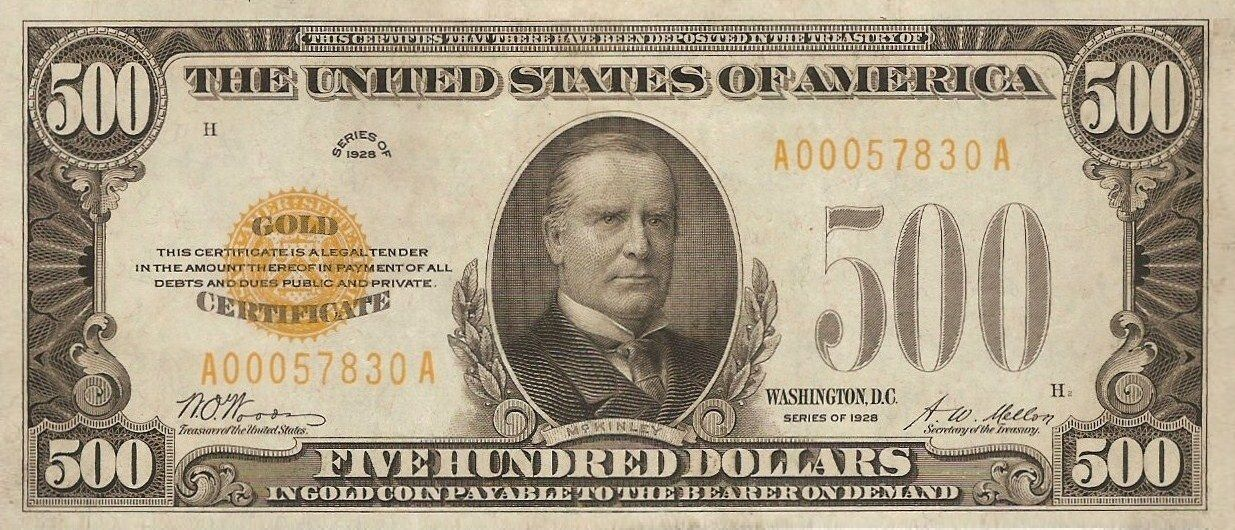 |
| Photo: Pinterest |
The United States dollar (symbol: $; code: USD; also abbreviated US$ or U.S. Dollar to distinguish it from other dollar-denominated currencies; known colloquially as the dollar, U.S. dollar, American dollar, or buck) is the official currency of the United States and its territories. The Coinage Act of 1792 established the United States dollar on equal footing with the Spanish silver dollar, divided it into 100 cents, and authorized the minting of coins denominated in dollars and cents. United States banknotes are issued in the form of Federal Reserve Notes, also known as greenbacks due to their historically predominant green color.
The Federal Reserve System, which serves as the country's central bank, manages the country's monetary policy.
The United States dollar was initially defined by a bimetallic standard of 371.25 grains (24.057 g) fine silver or, beginning in 1837, 23.22 grains (1.505 g) fine gold, or $20.67 per troy ounce. The Gold Standard Act of 1900 permanently linked the dollar to gold. Its gold equivalence was revised to $35 per troy ounce in 1934. All ties to gold have been severed since 1971.
Following World War I, the United States dollar became an important international reserve currency, eventually displacing the pound sterling as the world's primary reserve currency by the Bretton Woods Agreement near the end of World War II. In international transactions, the dollar is the most commonly used currency. It is also the official currency in a number of countries and the de facto currency in a number of others, with Federal Reserve Notes (and, in a few cases, US coins) in circulation.
As of February 10, 2021, there was $2.10 trillion in circulation, $2.05 trillion of which was in Federal Reserve Notes (the remaining $50 billion was in coins and older-style United States Notes).
 Top 10 Longest Rivers in the United States Top 10 Longest Rivers in the United States The US has an abundance of rivers that are not only long but also with beautiful sceneries. Check out the 10 longest rivers in the ... |
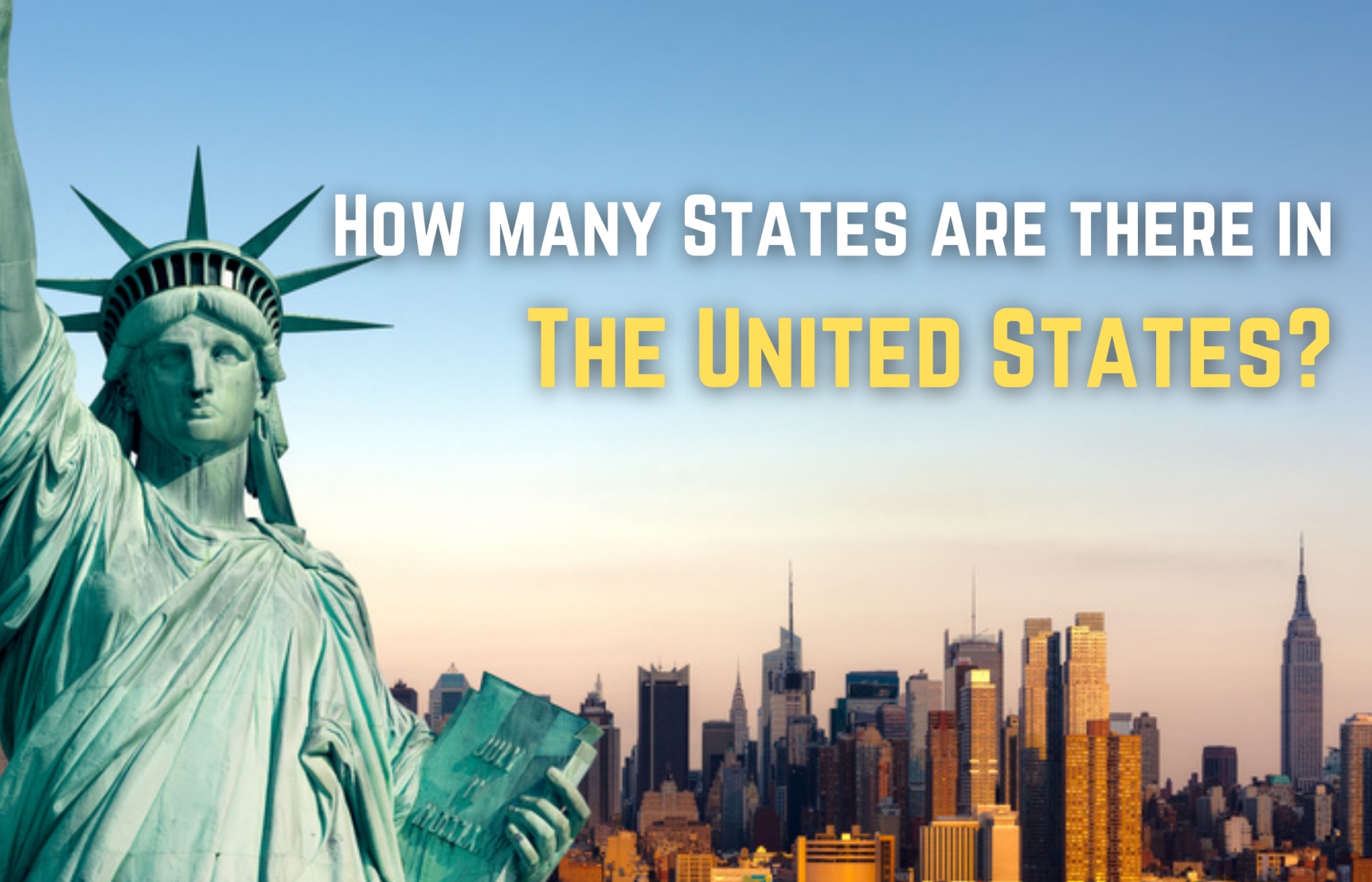 How Many States Are There In The United States - 50 or 52? How Many States Are There In The United States - 50 or 52? How many states in total in the United States of America, the big nation located on the continent of North America? Check out the answer ... |
 The 50 US States Ranked by Popuplation Today - The Largest and Smallest The 50 US States Ranked by Popuplation Today - The Largest and Smallest With 50 states and other dependent areas, United States (US) has quite a big population in the world: 333,387,218 up to now. Here are the ... |
 Top 10 Most Popular Newspapers In The United States Top 10 Most Popular Newspapers In The United States Newspapers play an important part in our daily life, and America has 10 of the most popular newspapers, not in the United States but also ... |























